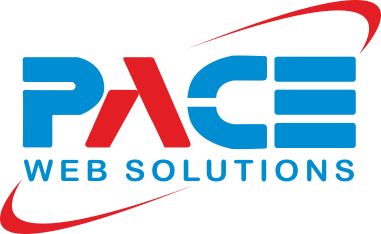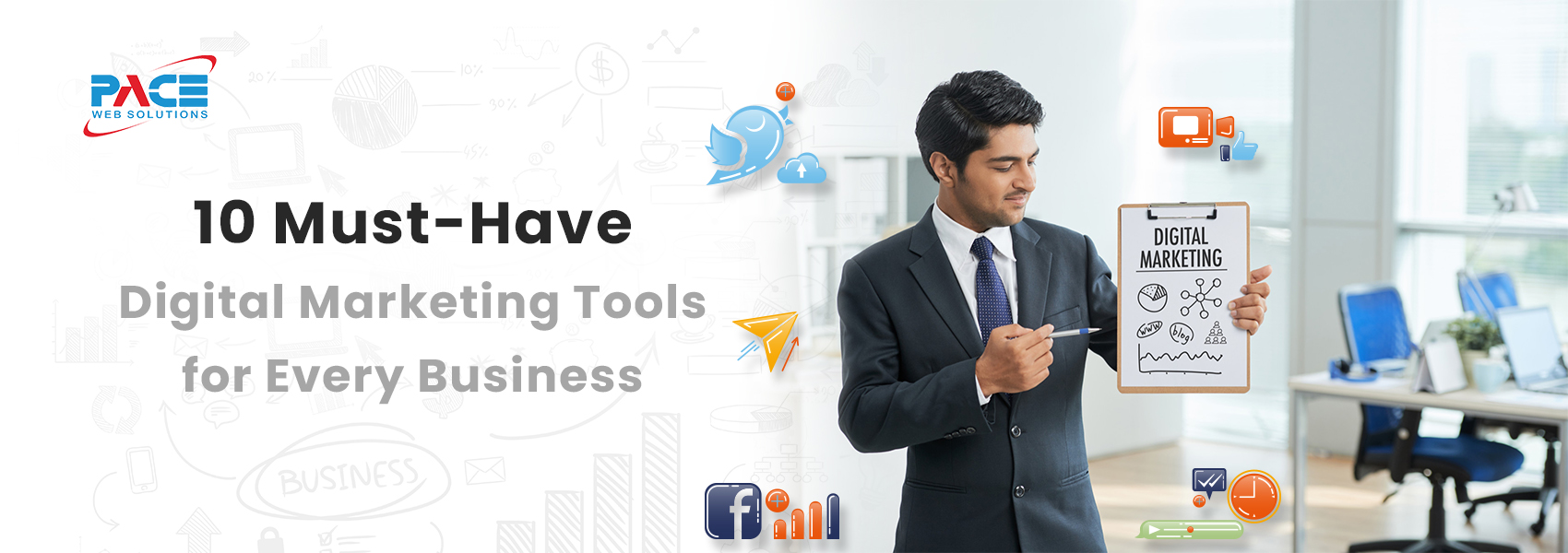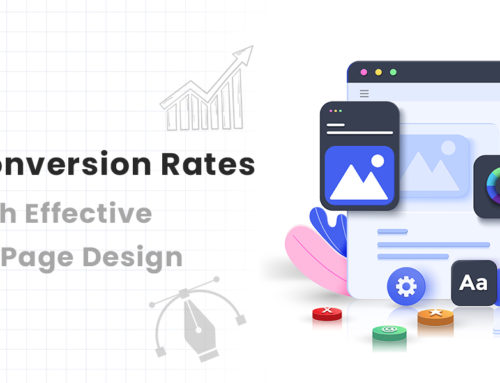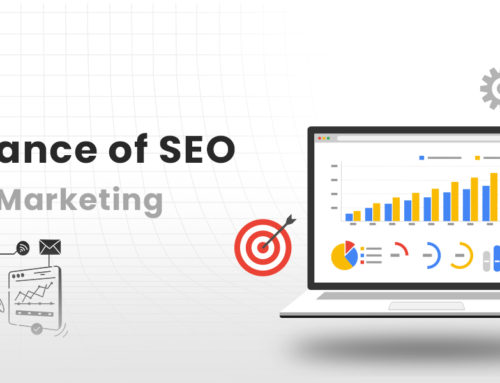Table of Contents
Introduction
In the ever-evolving world of digital marketing, leveraging the right set of digital marketing tools and marketing software is paramount for businesses aiming to succeed and thrive in the digital realm. These Digital Marketing Tools not only enhance productivity but also streamline marketing efforts through automation.
To stay competitive and achieve optimal results, every business should equip itself with the 10 must-have digital marketing tools. These digital marketing tools empower businesses to optimize their marketing strategies, automate repetitive tasks, and gain valuable insights through advanced analytics. From content management systems and email marketing platforms to social media management tools and SEO software, these indispensable digital marketing tools provide a solid foundation for businesses to maximize their online presence and drive impactful results. With their ability to boost productivity, automate processes, and leverage data-driven insights, these must-have digital marketing tools are essential for businesses of all sizes and industries looking to thrive in the digital age.
Keyword Research Tools for Digital Marketing
When it comes to optimizing digital content for search engines, keyword research is a fundamental step. Fortunately, there are several popular keyword research tools available to help businesses identify relevant keywords and analyze search volumes. Three widely used tools in the industry are Google Keyword Planner, SEMrush, and Ahrefs.
1.1 Google Keyword Planner:
As a free tool provided by Google Ads, Google Keyword Planner is a go-to resource for keyword research. It allows users to discover new keyword ideas, assess search volumes, and understand keyword competitiveness. The tool provides valuable insights into keyword trends and allows businesses to refine their keyword selection based on their target audience and industry.
1.2 SEMrush:
SEMrush is a comprehensive SEO tool that offers a range of features, including powerful keyword research capabilities. With its extensive database, SEMrush provides detailed information on keyword volumes, competition levels, and related keyword suggestions. Additionally, it enables businesses to analyze their competitors’ keyword strategies and identify lucrative opportunities.
1.3 Ahrefs:
Ahrefs is another popular keyword research tool that offers comprehensive insights into keyword performance and search volumes. It provides accurate data on keyword difficulty, click-through rates, and search trends. Ahrefs also offers a feature called “Keyword Explorer” that allows users to discover new keyword ideas and assess their potential value in driving organic traffic.
These keyword research tools assist businesses in identifying relevant keywords by providing comprehensive data on search volumes, competition levels, and related keyword suggestions. By understanding the search behaviour of their target audience, businesses can optimize their content to match user intent effectively.
Furthermore, these digital marketing tools help analyze search volumes, enabling businesses to prioritize high-volume keywords that have the potential to drive significant organic traffic. By selecting the right keywords, businesses can improve their search engine rankings, attract relevant visitors, and increase their chances of conversions.
Content Creation and Management Tools for Digital Marketing
Content creation and management play a vital role in digital marketing strategies. With the help of specialized digital marketing tools, businesses can produce high-quality content and effectively manage it across various platforms. Let’s explore content creation tools like Canva and Grammarly, as well as content management systems (CMS) like WordPress.
2.1 Content Creation Tools:
2.1.1. Canva:
Canva is a user-friendly graphic design tool that allows businesses to create visually appealing content without the need for advanced design skills. It offers a wide range of templates, images, and design elements that can be customized to match branding requirements. With Canva, businesses can design engaging social media posts, banners, infographics, and more.
2.1.2. Grammarly:
Grammarly is a popular writing assistant tool that helps businesses enhance the quality of their content. It offers real-time grammar and spell-checking, as well as suggestions for improving clarity, conciseness, and readability. Grammarly ensures that written content is error-free and effectively communicates the intended message.
2.2 Content Management Systems (CMS):
- WordPress:
WordPress is a widely used CMS that simplifies content creation, publishing, and management. It provides a user-friendly interface and offers a plethora of themes, plugins, and customizable features. With WordPress, businesses can create and edit content seamlessly, organize it into categories and tags, and schedule posts for future publication. Additionally, WordPress offers robust SEO capabilities, making it easier for businesses to optimize their content for search engines.
Benefits of Content Management Systems:
Content management systems like WordPress offer several benefits for businesses:
1. User-Friendly Interface:
CMS platforms provide intuitive interfaces that make it easy for non-technical users to create and manage content without coding knowledge.
2. Collaboration & Workflow:
CMS allows multiple users to collaborate on content creation, with role-based access controls, content approval processes, and versioning capabilities.
3. SEO-Friendly Features:
CMS platforms often include built-in SEO tools, such as metadata optimization, friendly URLs, and XML sitemaps, helping businesses improve their search engine visibility.
4. Scalability & Flexibility:
CMS platforms are highly scalable, accommodating businesses of all sizes and offering flexibility to add new features, plugins, and integrations as needed.
5. Content Organization & Categorization:
CMS enables businesses to efficiently organize content using categories, tags, and custom taxonomies, making it easier for visitors to navigate and find relevant information.”
Social Media Management Tools for Digital Marketing
Social media has become a vital platform for businesses to connect with their audience, build brand awareness, and drive engagement. To streamline and enhance social media efforts, businesses often rely on social media management tools. Let’s explore popular social media management tools like Hootsuite, Buffer, and Sprout Social, and their key features for scheduling posts, managing multiple platforms, and analyzing social media performance.
3.1. Social Media Management Tools:
3.1.1. Hootsuite:
Hootsuite is a comprehensive social media management platform that allows businesses to schedule and publish posts across multiple social media platforms from a single dashboard. It supports popular platforms like Facebook, Twitter, Instagram, LinkedIn, and more. Hootsuite provides advanced scheduling features, content curation, team collaboration, and social media analytics.
3.1.2. Buffer:
Buffer is another popular social media management tool that enables businesses to schedule and publish posts on various social media platforms. It offers a simple and intuitive interface, allowing users to queue posts, set optimal posting times, and customize content for each platform. Buffer also provides analytics to measure post performance, engagement, and follower growth.
3.1.3. Sprout Social:
Sprout Social is a robust social media management and analytics tool. It allows businesses to schedule posts, monitor social media conversations, and engage with their audience. Sprout Social offers features like social media listening, content calendar management, team collaboration, and in-depth analytics for tracking performance and ROI.
3.2. Key Features of Social Media Management Tools:
3.2.1. Scheduling and Publishing:
These tools enable businesses to schedule posts in advance, ensuring a consistent presence on social media platforms. They provide the ability to set specific posting times, queue content, and manage content calendars efficiently.
3.2.2. Managing Multiple Platforms:
Social media management tools support various platforms, allowing businesses to manage multiple social media accounts from a single dashboard. This streamlines the process, saves time, and ensures a unified brand presence across platforms.
3.2.3. Social Media Analytics:
These tools provide valuable insights into social media performance, engagement metrics, audience demographics, and reach. By analyzing these metrics, businesses can measure the effectiveness of their social media strategies, make data-driven decisions, and optimize their campaigns for better results.
3.2.4. Monitoring and Engagement:
Social media management tools offer features to monitor brand mentions, comments, and messages across different platforms. This allows businesses to respond promptly, engage with their audience, and build strong customer relationships.
3.2.5. Content Curation and Collaboration:
Some tools facilitate content curation by suggesting relevant articles, news, and industry trends to share with the audience. Additionally, they provide collaboration features, allowing teams to work together on content creation, approvals, and publishing.”
Email Marketing Tools
Email marketing continues to be a powerful strategy for businesses to reach and engage their audience. To streamline and optimize their email campaigns, businesses often utilize email marketing tools. Let’s explore popular email marketing platforms like Mailchimp, ConvertKit, and Constant Contact, and their key features for designing email campaigns, managing subscriber lists, and tracking performance.
4.1 Email Marketing Platforms:
4.1.1. Mailchimp:
Mailchimp is one of the most popular email marketing platforms, offering a range of features for creating, sending, and analyzing email campaigns. It provides a user-friendly drag-and-drop editor to design visually appealing emails. Mailchimp also offers advanced automation features, A/B testing, subscriber segmentation, and detailed analytics.
4.1.2. ConvertKit:
ConvertKit is a robust email marketing platform designed for bloggers, content creators, and small businesses. It offers a straightforward and intuitive interface, making it easy to design and send targeted email campaigns. ConvertKit provides automation capabilities, customizable signup forms, subscriber tagging, and basic analytics to measure campaign performance.
4.1.3. Constant Contact:
Constant Contact is a comprehensive email marketing platform suitable for businesses of all sizes. It offers a wide range of customizable email templates and an intuitive editor to create visually appealing emails. Constant Contact provides list management features, contact segmentation, A/B testing, and detailed reporting to track open rates, click-through rates, and other engagement metrics.
4.2 Key Features of Email Marketing Tools:
4.2.1. Email Campaign Design:
These tools provide user-friendly editors and customizable templates to create visually appealing emails. Users can easily add images, text, buttons, and other elements to design engaging email campaigns without coding knowledge.
4.2.2. Subscriber List Management:
Email marketing platforms allow businesses to manage their subscriber lists effectively. They provide features to import and organize subscriber data, segment contacts based on specific criteria, and handle subscription management, including opt-ins and opt-outs.
4.2.3. Automation and Personalization:
Advanced email marketing tools offer automation features that enable businesses to send targeted and personalized emails based on specific triggers or actions. Automation workflows can be set up to welcome new subscribers, send follow-up emails, or re-engage inactive subscribers.
4.2.4. Tracking and Analytics:
These tools provide detailed analytics to track email campaign performance. Metrics such as open rates, click-through rates, bounce rates, and conversion rates are available for analysis. This data helps businesses evaluate the effectiveness of their campaigns and make informed decisions for future improvements.
4.2.5. Integration and Segmentation:
Email marketing platforms often integrate with other tools and platforms like CRM systems, e-commerce platforms, and social media, allowing businesses to streamline their workflows and leverage customer data for better targeting and segmentation.
Analytics and Reporting Tools for Digital Marketing
In the realm of digital marketing, measuring and analyzing data is essential for making informed decisions and optimizing marketing efforts. To track and visualize marketing data effectively, businesses often rely on analytics and reporting tools. Let’s explore popular tools like Google Analytics, Google Data Studio, and DashThis, and their ability to provide valuable insights for measuring and optimizing marketing efforts.
5.1. Analytics and Reporting Tools:
5.1.1. Google Analytics:
Google Analytics is a widely used web analytics tool that provides comprehensive insights into website traffic, user behavior, and conversion rates. It tracks key metrics like sessions, page views, bounce rates, and goal completions. Google Analytics offers customizable reports, real-time data, segmentation capabilities, and integration with other Google marketing tools.
5.1.2. Google Data Studio:
Google Data Studio is a data visualization tool that allows businesses to create interactive reports and dashboards using various data sources, including Google Analytics. It provides a user-friendly interface for creating visually appealing reports and offers customization options to display key metrics and trends. Google Data Studio enables businesses to share and collaborate on reports and offers real-time data updates.
5.1.3. DashThis:
DashThis is a reporting tool that allows businesses to aggregate data from multiple sources, including Google Analytics, social media platforms, and advertising campaigns. It offers pre-built templates and customizable dashboards to create professional reports quickly. DashThis provides data visualization, automated report scheduling, white-labelling options, and integration with popular marketing tools.
5.2. Measuring and Optimizing Marketing Efforts:
These analytics and reporting tools provide valuable insights for measuring and optimizing marketing efforts in the following ways:
5.2.1. Performance Measurement:
These tools track and measure key performance metrics, such as website traffic, conversion rates, and engagement metrics. Businesses can analyze these metrics to understand their marketing impact and identify areas for improvement.
5.2.2. Audience Insights:
Analytics tools offer demographic data, user behaviour patterns, and audience segmentation. These insights help businesses understand their target audience better, refine marketing strategies, and tailor content to meet audience preferences and needs.
5.2.3. Conversion Analysis:
Analytics tools provide detailed information on conversions, including conversion paths, funnel visualization, and attribution models. This data helps businesses understand the effectiveness of marketing channels, optimize conversion funnels, and allocate resources more effectively.
5.2.4. Data Visualization:
Reporting tools enable businesses to create visually appealing and interactive reports and dashboards. By visualizing data, businesses can easily identify trends, patterns, and outliers, making it easier to communicate insights and make data-driven decisions.
5.2.5. Performance Tracking and Goal Setting:
These tools allow businesses to set specific goals and track progress towards those goals. By monitoring key metrics and progress, businesses can adjust their marketing strategies, optimize campaigns, and ensure alignment with overall business objectives.
SEO Tools for Digital Marketing
In the world of digital marketing, search engine optimization (SEO) plays a crucial role in improving website visibility and driving organic traffic. To aid businesses in optimizing their website’s SEO performance and monitoring competitors, a variety of SEO tools are available. Let’s explore popular SEO tools such as Moz, SEMrush, and Ahrefs, and their key features for keyword tracking, backlink analysis, website auditing, and competitor monitoring.
6.1. Different types of SEO Tools:
6.1.1. Moz:
Moz is a comprehensive SEO toolset that offers a wide range of features to optimize website performance. It provides tools for keyword research, rank tracking, on-page optimization, and link analysis. Moz’s key features include keyword difficulty analysis, site crawling for technical SEO issues, backlink tracking, and a robust reporting dashboard.
6.1.2. SEMrush:
SEMrush is a powerful SEO tool that offers an extensive suite of features for keyword research, competitor analysis, and site auditing. It provides insights into organic and paid search performance, backlink analysis, and content optimization recommendations. SEMrush also offers features for position tracking, site health monitoring, and social media management.
6.1.3. Ahrefs:
Ahrefs is a popular SEO tool known for its robust backlink analysis capabilities. It provides comprehensive insights into backlinks, organic search traffic, and keyword rankings. Ahrefs offers features such as site auditing, competitor analysis, content research, and keyword tracking. It also provides tools for identifying top-performing content and monitoring brand mentions.
6.2. Key Features of SEO Tools:
6.2.1. Keyword Tracking:
SEO tools allow businesses to track keyword rankings in search engines. They provide insights into keyword search volume, difficulty, and competition, helping businesses optimize their content and improve organic search visibility.
6.2.2. Backlink Analysis:
These tools enable businesses to analyze their backlink profiles and identify opportunities to acquire high-quality backlinks. Backlink analysis features help businesses understand competitor link strategies and improve their own link-building efforts.
6.2.3. Website Auditing:
SEO tools offer website auditing capabilities to identify technical issues, crawl errors, broken links, and other factors that may impact SEO performance. This helps businesses optimize their website structure and ensure it adheres to SEO best practices.
6.2.4. Competitor Monitoring:
SEO tools allow businesses to monitor their competitors’ SEO strategies and performance. They provide insights into competitors’ keyword rankings, backlinks, and content strategies, helping businesses stay ahead in the competitive landscape.
6.2.5. Content Optimization:
SEO tools often provide content optimization recommendations to help businesses improve their on-page SEO. They analyze factors such as keyword usage, meta tags, page speed, and content quality, offering actionable suggestions for optimization.
6.2.6. Reporting and Analytics:
These tools provide reporting dashboards and analytics to track SEO performance metrics, monitor progress, and showcase improvements over time. Reporting features help businesses understand the impact of their SEO efforts and communicate results to stakeholders.
Paid Advertising Tools for Digital Marketing
In the world of digital marketing, paid advertising plays a vital role in reaching target audiences and driving targeted traffic to websites. To create and manage effective paid ad campaigns across different platforms, businesses rely on various paid advertising tools. Let’s explore popular tools like Google Ads, Facebook Ads Manager, and LinkedIn Campaign Manager and their key features for creating and managing paid ad campaigns.
7.1. Paid Advertising Tools:
7.1.1. Google Ads:
Google Ads is one of the most widely used advertising platforms, enabling businesses to run ads on Google search results, YouTube, and partner websites. It offers features for keyword targeting, ad creation, budget management, and performance tracking. Google Ads provides options for search ads, display ads, video ads, and shopping ads, allowing businesses to reach their target audience effectively.
7.1.2. Facebook Ads Manager:
Facebook Ads Manager is a robust platform for creating and managing ads on Facebook and Instagram. It offers advanced targeting options based on demographics, interests, and behaviours. Facebook Ads Manager provides features for ad creation, audience targeting, budget optimization, and performance tracking. It also offers tools for retargeting website visitors and creating dynamic ads.
7.1.3. LinkedIn Campaign Manager:
LinkedIn Campaign Manager is a platform for running ads on the professional networking platform. It offers targeted advertising options based on job titles, industries, and company size. LinkedIn Campaign Manager provides features for ad creation, audience targeting, budget management, and performance tracking. It also offers tools for sponsored content, sponsored InMail, and text ads.
7.2. Key Features of Paid Advertising Tools:
7.2.1. Ad Creation:
These tools provide intuitive interfaces and templates for creating visually appealing and engaging ads. They offer options for customizing ad copy, images, videos, and calls to action to maximize the impact of the ad.
7.2.2. Targeting Options:
Paid advertising tools offer a wide range of targeting options to reach the desired audience. Businesses can target users based on demographics, interests, behaviours, location, and more. Precise targeting helps businesses deliver their ads to the right people, increasing the chances of conversions.
7.2.3. Budget Management:
These tools provide features for setting budgets, bid strategies, and ad spending limits. They allow businesses to allocate their budget effectively and optimize ad performance based on budget constraints.
7.2.4. Performance Tracking:
Paid advertising tools offer comprehensive analytics and reporting features to track the performance of ad campaigns. Metrics such as impressions, clicks, conversions, and cost per acquisition are available for analysis. Performance tracking enables businesses to measure the effectiveness of their ads and make data-driven decisions to optimize campaign performance.
7.2.5. Optimization Tools:
These tools provide optimization features to improve ad performance over time. They offer A/B testing capabilities, ad scheduling options, conversion tracking, and tools for ad rotation. Optimization features help businesses refine their ad campaigns and achieve better results.
7.2.6. Platform-Specific Features:
Each paid advertising platform has unique features and ad formats. These tools provide options for specific ad formats like search ads, display ads, video ads, carousel ads, and more. Businesses can leverage these platform-specific features to create ads that are tailored to the platform and audience.
Project Management and Collaboration Tools for Digital Marketing
In the fast-paced world of marketing, effective project management and seamless collaboration among team members are crucial for the successful execution of marketing campaigns. To streamline workflows, organize tasks, and enhance collaboration, businesses rely on project management and collaboration tools. Let’s explore popular tools like Trello, Asana, and Monday.com, and their key features for organizing marketing tasks and facilitating team collaboration.
8.1. Project Management and Collaboration Tools:
8.1.1. Trello:
Trello is a visual project management tool that uses boards, lists, and cards to help teams organize and prioritize tasks. It provides a flexible and intuitive interface where tasks can be assigned to team members, progress can be tracked, and deadlines can be set. Trello also allows for file attachments, comments, and activity tracking, making it easy to collaborate and keep everyone on the same page.
8.1.2. Asana:
Asana is a versatile project management tool that offers a range of features to manage marketing projects. It enables teams to create projects, assign tasks, set deadlines, and track progress. Asana provides a centralized platform where team members can collaborate, share files, leave comments, and receive notifications. It also offers timeline views, integrations with other tools, and customizable dashboards for better project visibility and tracking.
8.1.3. Monday.com:
Monday.com is a highly customizable project management and collaboration tool. It allows teams to create and track tasks, set dependencies, and visualize project timelines. Monday.com offers various view options, including Kanban boards, Gantt charts, and dashboards, to suit different project management needs. It also provides communication features, file-sharing capabilities, automation options, and integrations with popular third-party tools.
8.2. Key Features of Project Management and Collaboration Tools:
8.2.1. Task Assignment:
These tools allow project managers to assign tasks to team members, ensuring clear ownership and accountability. Assignees can view their assigned tasks, update progress, and collaborate with others working on the same project.
8.2.2. Progress Tracking:
Project management tools provide features to track task progress, including status updates, due dates, and completion percentages. This allows team members and stakeholders to monitor the overall progress of marketing campaigns and identify any bottlenecks.
8.2.3. File Sharing:
Collaboration tools enable seamless file sharing among team members. They provide options for attaching files, documents, and creative assets to tasks or projects, ensuring easy access and collaboration on relevant materials.
8.2.4. Communication and Collaboration:
These tools offer communication features such as commenting, tagging team members, and real-time notifications. Team members can collaborate within tasks or projects, share updates, and discuss ideas, fostering effective communication and teamwork.
8.2.5. Integration and Automation:
Project management tools often integrate with other marketing tools, such as email platforms or design software, to streamline workflows and eliminate manual tasks. They may also offer automation capabilities to trigger actions based on specific events or task dependencies.
8.2.6. Customization and Visualization:
Some project management tools allow for the customization of workflows, fields, and views to align with specific marketing processes. Visualization options like boards, timelines, or charts offer a clear overview of tasks, deadlines, and project progress, enhancing visibility and understanding.
Conversion Rate Optimization (CRO) Tools for Digital Marketing
In the realm of digital marketing, optimizing website conversions is essential for driving business growth. Conversion Rate Optimization (CRO) tools play a crucial role in analyzing user behaviour, conducting A/B testing, and optimizing website performance to maximize conversions. Let’s explore popular CRO tools like Optimizely, Crazy Egg, and Hotjar, and understand how they help improve website performance and enhance user experience.
9.1. CRO Tools:
9.1.1. Optimizely:
Optimizely is a versatile CRO tool that offers a range of features to experiment with and optimize websites. It enables businesses to conduct A/B testing, multivariate testing, and personalization to optimize different elements of their website. Optimizely provides a user-friendly interface for creating and managing experiments, tracking performance, and gaining insights to make data-driven decisions.
9.1.2. Crazy Egg:
Crazy Egg is a heatmap and user behaviour analysis tool that helps businesses understand how users interact with their websites. It provides visual representations of user behaviour, such as heatmaps, scroll maps, and click maps. Crazy Egg also offers features like session recordings, A/B testing, and user feedback collection, allowing businesses to identify and address conversion barriers effectively.
9.1.3. Hotjar:
Hotjar is a comprehensive CRO tool that combines heatmaps, session recordings, and user feedback to provide insights into website performance. It offers features such as heatmaps, clicks tracking, conversion funnels, form analysis, and surveys. Hotjar helps businesses visualize user behaviour, uncover usability issues, and gather feedback to optimize website conversions and enhance user experience.
9.2. Key Features of CRO Tools:
9.2.1. User Behavior Analysis:
CRO tools provide features like heatmaps, click tracking, and session recordings to analyze how users interact with a website. These insights help businesses identify areas of improvement, optimize website layouts, and enhance user experience.
9.2.2. A/B Testing:
CRO tools enable businesses to conduct A/B tests by creating different variations of web pages or elements. They provide statistical analysis and reporting to determine the most effective version. A/B testing allows businesses to optimize landing pages, call-to-action buttons, forms, and other conversion elements.
9.2.3. Conversion Funnel Analysis:
CRO tools offer features to analyze and optimize conversion funnels. They track user journeys from initial entry to conversion, identifying potential drop-off points and areas for improvement. Conversion funnel analysis helps businesses streamline the conversion process and increase overall conversion rates.
9.2.4. User Feedback Collection:
Some CRO tools allow businesses to gather user feedback through on-site surveys or polls. This feedback helps businesses understand user preferences, pain points, and expectations, guiding optimization efforts and improving user satisfaction.
9.2.5. Reporting and Insights:
CRO tools provide comprehensive reporting and insights on experiment performance, user behaviour, and conversion rates. They offer data visualization, statistical significance calculations, and segmentation options to understand the impact of optimization efforts and make informed decisions.
9.2.6. Personalization:
Some CRO tools offer personalization features, allowing businesses to tailor website experiences based on user segments or behaviour. Personalization can involve dynamic content, targeted offers, or personalized recommendations, enhancing user engagement and conversion rates.
Customer Relationship Management (CRM) Tools for Digital Marketing
In today’s highly competitive business landscape, building and maintaining strong customer relationships is crucial for success. Customer Relationship Management (CRM) tools provide businesses with the means to effectively manage customer interactions, track sales leads, and enhance overall customer satisfaction. Let’s explore popular CRM platforms like HubSpot, Salesforce, and Zoho, and understand their key features for email automation, contact management, and customer segmentation.
10.1. CRM Platforms:
10.1.1. HubSpot:
HubSpot offers a comprehensive CRM platform designed to help businesses manage their customer relationships seamlessly. It provides features such as contact and lead management, deal tracking, email marketing automation, and customer segmentation. HubSpot’s CRM also integrates with other HubSpot marketing and sales tools, enabling businesses to streamline their marketing and sales processes.
10.1.2. Salesforce:
Salesforce is a highly customizable and feature-rich CRM platform trusted by businesses of all sizes. It offers a wide range of functionalities, including contact management, opportunity tracking, sales forecasting, and customer support. Salesforce provides a unified view of customer interactions, enabling businesses to effectively manage their sales pipeline and nurture customer relationships.
10.1.3. Zoho CRM:
Zoho CRM is a user-friendly CRM platform that offers an array of features to manage customer interactions and drive sales growth. It includes modules for lead and contact management, deal tracking, email automation, and customer support. Zoho CRM also integrates with other Zoho business tools, allowing businesses to streamline their operations across different departments.
10.2. Key Features of CRM Tools:
10.2.1. Contact Management:
CRM tools provide a centralized database for storing and managing customer information. Businesses can track customer interactions, store contact details, and view a comprehensive history of each customer’s engagement with the company.
10.2.2. Email Automation:
CRM platforms offer email automation features, allowing businesses to send personalized emails at scale. This includes automated email sequences, personalized email templates, and email scheduling. Email automation helps nurture leads, engage with customers, and deliver targeted messaging.
10.2.3. Sales Lead Tracking:
CRM tools enable businesses to track and manage sales leads throughout the sales pipeline. This includes lead capture, lead scoring, and lead assignment functionalities. By monitoring the progress of leads, businesses can prioritize follow-ups and ensure effective lead conversion.
10.2.4. Customer Segmentation:
CRM platforms allow businesses to segment their customer base based on various criteria, such as demographics, purchase history, or engagement levels. Customer segmentation helps businesses tailor their marketing efforts, personalize communications, and deliver relevant offers to different customer segments.
10.2.5. Analytics and Reporting:
CRM tools provide analytics and reporting capabilities to track and measure sales performance, customer interactions, and marketing activities. They offer insights into key metrics, such as conversion rates, revenue generated, and customer satisfaction, enabling businesses to make data-driven decisions and optimize their strategies.
10.2.6. Integration Capabilities:
CRM platforms often integrate with other business tools, such as email marketing software, marketing automation platforms, or customer support systems. Integration capabilities ensure a seamless flow of data and enable businesses to create a unified customer experience across different touchpoints.
Conclusion
In today’s digital landscape, utilizing the right digital marketing tools is essential for businesses aiming to achieve improved efficiency and maximize their marketing efforts. Throughout this discussion, we have explored the 10 must-have digital marketing tools that can benefit every business. From keyword research tools to social media management, email marketing, analytics, SEO, paid advertising, content creation and management, conversion rate optimization, customer relationship management, and project management and collaboration tools, each category offers unique features to enhance various aspects of marketing strategies.
By leveraging these tools, businesses can streamline their processes, automate repetitive tasks, and gain valuable insights into their target audience, competition, and overall performance. They empower businesses to optimize campaigns, improve productivity, and deliver personalized experiences to their customers. From identifying relevant keywords and tracking website performance to managing social media platforms and analyzing campaign results, these tools are designed to make the marketing journey more efficient, data-driven, and successful.
As you explore the world of digital marketing tools, it’s essential to evaluate your specific marketing needs and choose the tools that align with your goals and objectives. Consider factors such as your budget, industry, target audience, and team requirements. Whether you’re a small startup or a large enterprise, these digital marketing tools can provide immense value and contribute to your marketing success.
Remember, the digital marketing landscape is ever-evolving, and new tools are constantly emerging. Stay up-to-date with the latest trends and advancements in the industry to ensure you have the right tools at your disposal to stay ahead of the competition.
So, embark on your digital marketing journey with confidence and explore the recommended tools. Embrace the power of automation, data-driven insights, and streamlined processes to take your marketing efforts to new heights. Leverage these tools to optimize your strategies, engage with your target audience effectively, and drive measurable results for your business.





Leave A Comment